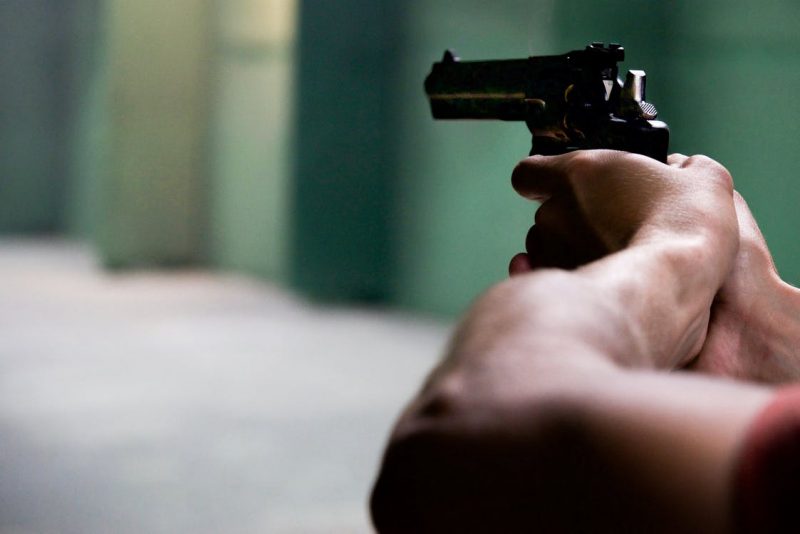Editorial
What do we do about gun violence in the United States?

The tragedy of the mass shooting in Vegas is still fresh in our minds. Pulse, Virginia Tech, and Sandy Hook are still imprinted in the brains of many for that matter. As horrific as these incidents were, gun violence is a daily issue in this country. 273 mass shootings and over 11,000 deaths attributed to gun violence in the United States just in 2017 according to Newsweek’s John Haltiwanger. The debate continues on what will decrease shootings in this country. One thing is clear, however. What we are doing is not working.
Many on both sides of the gun debate have their solutions. Better background checks, longer wait times, better mental health services on one side and more guns in the hands of citizens on the other.
In some ways the answer is simple. In some ways it’s not. The truth is that each mass casualty incident is a different situation. In some cases a responsible gun owner did, or could have, lessened the tragedy. There have also been situations where better background checks could have very well saved innocent people’s lives. There have also been several mass casualty incidents in the United States not involving firearms, so the argument that someone will find a way to carry out their plan has some merit. Also many of our every day shootings are drug and gang related. Not terror related.
While states with the most lax gun laws generally have the most gun violence, an issue that both sides should be able to somewhat agree on is our mental health statistics in this country. An issue that goes beyond gun violence.
Suicide is the leading cause of gun-related deaths across the country.
According to National Alliance of Mental Illness:
- Serious mental illness costs America $193.2 billion in lost earnings per year.
- Suicide is the 10th leading cause of death in the U.S., the 3rd leading cause of death for people aged 10–14 and the 2nd leading cause of death for people aged 15–24.
- More than 90% of children who die by suicide have a mental health condition.
- Each day an estimated 18-22 veterans die by suicide.
- Approximately 1 in 5 adults in the U.S.—43.8 million, or 18.5%—experiences mental illness in a given year.
- Approximately 1 in 25 adults in the U.S.—9.8 million, or 4.0%—experiences a serious mental illness in a given year that substantially interferes with or limits one or more major life activities.
- 1.1% of adults in the U.S. live with schizophrenia.
- 2.6% of adults in the U.S. live with bipolar disorder.
- 6.9% of adults in the U.S.—16 million—had at least one major depressive episode in the past year.
- 18.1% of adults in the U.S. experienced an anxiety disorder such as posttraumatic stress disorder, obsessive-compulsive disorder and specific phobias.
- Among the 20.2 million adults in the U.S. who experienced a substance use disorder, 50.5%—10.2 million adults—had a co-occurring mental illness.
Research shows that risk prediction for mental illness is an inexact science, but we can’t continue to sit by and not address this serious health issue. Some states like Florida have decreased funding for mental health. When some budgets are decreasing, they should be increasing.
These statistics obviously aren’t implying that people with mental illness are violent or criminals. According to Treatment Advocacy Center, from 2000 to 2015, only 32%, of mass murderers were mentally ill. Many with mental illness are non-violent. What it does show is treating mental illness in this country is not only important in combating gun violence, but also substance abuse and suicides.
Not one solution will wipe out gun deaths and even if you disagree that mental health will curb mass shootings, don’t the citizens of this country deserve a better quality of life? Especially our veterans?
-

 Community6 years ago
Community6 years agoNational Shrine of La Salette Festival of Lights 2017 set to begin
-

 Community6 years ago
Community6 years agoMassachusetts State Police looking for good home for retired dogs
-

 Crime6 years ago
Crime6 years agoFall River ranked most dangerous city in Massachusetts according to report
-

 latest6 years ago
latest6 years agoDurfee student allegedly overdoses on marijuana
-

 Community6 years ago
Community6 years agoVideo of Fall River Police goes viral
-

 Causes6 years ago
Causes6 years agoMissing Fall River woman found deceased
-

 Crime6 years ago
Crime6 years agoFall River Police add names to most wanted list
-

 Causes6 years ago
Causes6 years agoFall River teenager reported missing has been found




